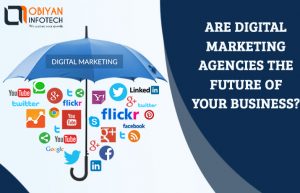Digital Product Strategy: Whether your product is virtual or tangible, almost every business nowadays must use digital means to attract new consumers, make sales to existing customers, support current customers, and serve current customers. This is true regardless of the kind of business.
There are more pressing issues at hand than just launching a new website or email system. Any part of your business might benefit from a better digital presence.
Often, the motivation for digital activities stems from a desire to understand more about your customers at every stage of the sales process.
Some companies steadily improve their capabilities over time, putting in significant efforts to either improve their current offers or provide brand-new goods. Digital transformation is a more comprehensive strategy involving new goals and investments focusing on digital components, service delivery, and data at the core of everything.
Digital efforts cannot be put together to maintain pace with the competition, whether they are evolutionary or revolutionary. They must be part of a larger strategy that begins at the top echelons of the organization and works its way down.
Every modern company’s capacity to succeed in the market is based on implementing an effective digital product strategy. If you want your new projects to succeed, you must understand the following framework for digital product planning and management. Here’s how it’s laid out.
A dictionary of terms and concepts for digital product strategy and planning management
With the help of this book, business owners and executives may better grasp the concepts that support the creation of new digital commodities and the enhancement of already existing ones. But first, let’s clear up several terminologies, including what occurs when the word “digital” is added to the following prominent business terms:
The placement of a product in the market
Having a digital product strategy means your organization has identified the value it plans to give customers via software and other digital resources. It’s a plan that explains to your team and customers where you’ll be putting your energy. In addition, it includes a strategic strategy, or product roadmap, for achieving the desired outcome.
The strategic vision is different from a product strategy in that it has to be precise, actionable, and constantly evolving to keep up with the changing market and technical landscapes; it is not the same as having a product strategy.
Management of the product
“The process of conceiving, producing, delivering, monitoring and enhancing goods in and removing items from a market” is Gartner’s definition of digital product management. Ultimately, the goal of all of this is to maximize profit.
Take note that the presumption behind this definition is that a plan for such a process already exists. Development and governance are the two subcategories that make up “digital product management.”
Development of a product
At this point in the process, your organization is defining, planning, developing, and delivering either new digital goods or upgrades to existing ones. Everything should center around your best understanding of the needs of the end user (or customer) for your products while doing so. Design thinking and user-centered design are only two of the many titles given to this method when discussing achieving this.
What are the first steps in formulating a digital product development strategy?
The strategy has the same place in every organization as Mission, Vision, and Values, which describe why your company exists, what it hopes to achieve, and what it cares about.
It used to be that having a digital product plan was merely one of many options for an organization’s broader product strategy. On the other hand, it’s becoming harder and harder to tell them apart.
This is a good idea, but how exactly do you prioritize your strategy?
- We want to consider whether a product will continue running, growing, or transforming.
- Business activities are considered “run” when they are carried out without further financial investments. The purpose of a “harvest” method, as this technique is often called, is to maximize the remaining earning potential while eventually allowing the product to become outdated.
- The term “Grow” in the product’s name implies that it still has the potential to generate more revenue if additional money is invested in it.
- When the term “transform” is used, it implies that the product can only grow in the market by making significant changes. This viewpoint makes it easier to see why “digital transformation” is a major worry since it needs the whole firm to rethink or rebuild everything it does to take advantage of future market growth.
- If you don’t know what the market wants, it’s impossible to understand if a product should be maintained, grown, or transformed.
Only a tiny portion of the whole picture may be seen in sales trends. In addition to having a firm grasp on what your customers want from you, you’ll want to set up a reliable feedback loop for them. An essential part of user-centered design is doing primary consumer research, which may include talking to individuals or small groups of people who have a pressing need for the goods or services you provide. Customer feedback loops and user demand analysis aren’t optional extras in the product development process; they’re essential components that can’t be overlooked. To succeed in business or personal life, a company must balance its economic objectives and what its customers perceive they need.
You Can Read Also:
International SEO: Best Practices and Site Architecture to Follow in 2022
8 Tips for Content Optimization for Every Social Media Platform
Understanding the Google Ads Auction: The Importance of Quality Score and How to Improve It



